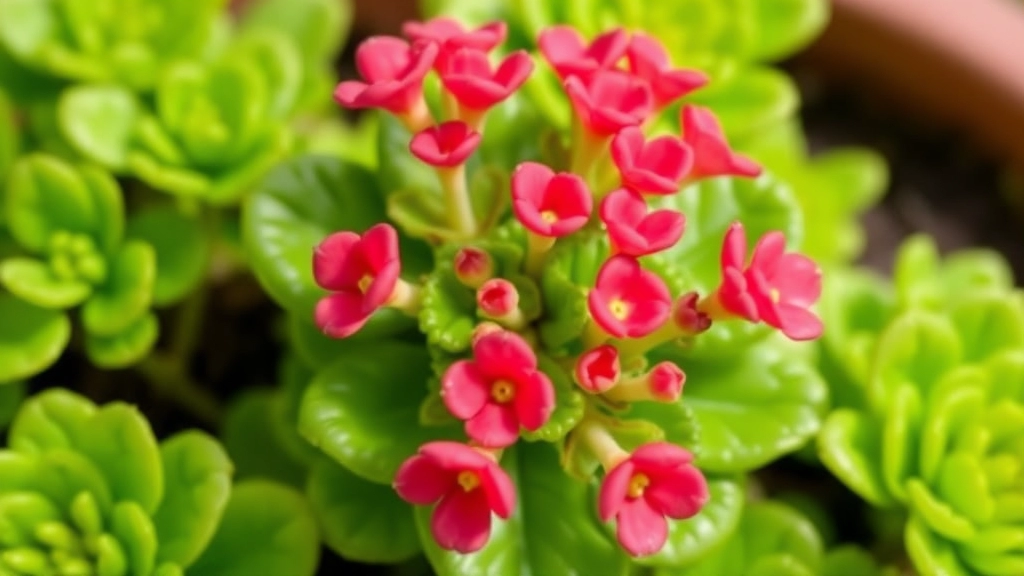How to Plant Kalanchoe
Wondering how do you plant Kalanchoe? Let’s dive right in. First, choose a sunny spot for your Kalanchoe, whether indoors or outdoors. These succulents love bright, indirect light. If you’re planting outside, ensure the soil is well-draining. Indoors, a pot with drainage holes and a succulent soil mix works best.
When planting, gently remove the Kalanchoe from its nursery pot, being careful not to damage the roots. Place it in its new home, fill in with soil, and give it a light watering. Remember, Kalanchoe prefers to dry out between waterings. With these simple steps, your Kalanchoe will thrive and brighten up your space with its vibrant blooms.
Are you struggling to find the perfect spot for your Kalanchoe?
Selecting the right location is crucial for the health and vibrancy of your plant.
Kalanchoe thrives in warm, well-lit environments, making location a key factor in its growth. Here are some essential considerations to keep in mind:
– **Sunlight Exposure**: Kalanchoe loves bright, indirect sunlight.
– Aim for at least 6 hours of light daily.
– Avoid harsh, direct sunlight that can scorch the leaves.
– **Temperature**: This succulent prefers warmer conditions.
– Ideal temperatures range from 15°C to 25°C.
– Protect it from frost and extreme cold.
– **Humidity**: Kalanchoe enjoys low humidity levels.
– Ensure good air circulation around the plant.
– Avoid overly damp areas to prevent rot.
– **Outdoor vs. Indoor**: If planting outdoors, choose a sheltered area.
– Indoor Kalanchoe should be placed near a window but out of direct sunlight.
– **Container Considerations**: If potted, ensure the container has drainage holes.
– This prevents waterlogging, which can lead to root rot.
For more detailed guidance on indoor and outdoor care, check out our [Kalanchoe Blossfeldiana Indoor vs. Outdoor Care Guide](https://planthq.org/kalanchoe-blossfeldiana-indoor-vs-outdoor-care-guide/). If you are interested in learning how to plant your Kalanchoe in a pot, refer to our [Step-by-Step Guide](https://planthq.org/how-to-plant-kalanchoe-in-a-pot-stepbystep-guide/).
Preparing the Ideal Soil Mix
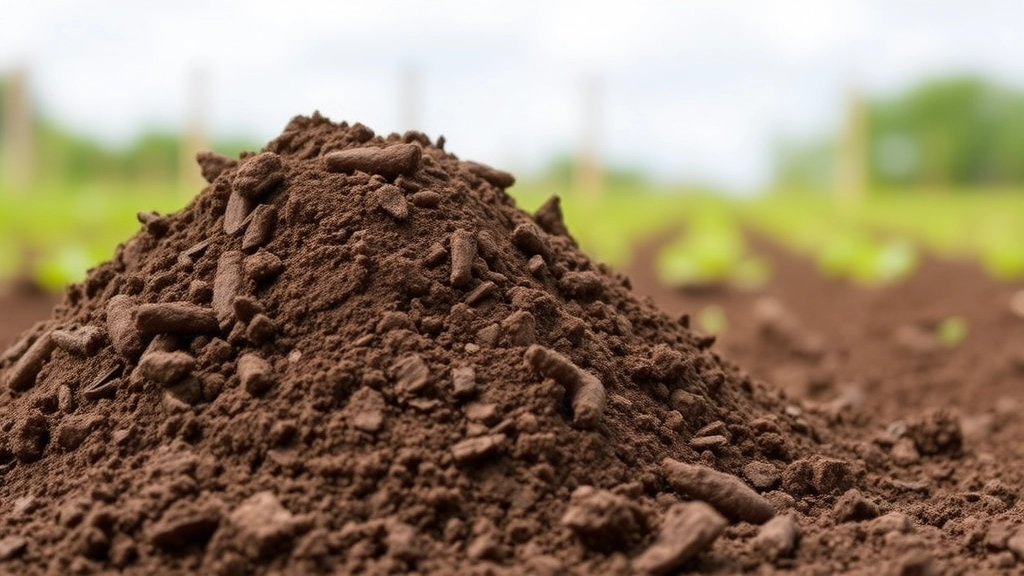
So, you’ve chosen the perfect spot for your Kalanchoe. Now, let’s talk about the soil mix that’ll help it thrive.
You might be wondering, “What kind of soil does Kalanchoe need?”
The key here is to create a well-draining soil mix. Kalanchoe is a succulent, which means it doesn’t like sitting in water. Here’s how to whip up the ideal blend:
- Base Ingredients: Use a combination of potting soil, perlite, and coarse sand.
- Potting Soil: This provides essential nutrients.
- Perlite: This helps with drainage and aeration.
- Coarse Sand: This adds extra drainage and mimics the plant’s natural habitat.
- Mix Ratios: A good rule of thumb is:
- 50% potting soil
- 25% perlite
- 25% coarse sand
- Optional Additions: If you’re feeling adventurous, you can mix in some orchid bark or pumice for even better drainage.
Once you’ve mixed your soil, it’s time to check its texture. Grab a handful and squeeze it. If it holds together but crumbles easily, you’re on the right track!
Step-by-Step Guide to Planting Kalanchoe Outdoors
When it comes to planting Kalanchoe outdoors, many people wonder about the best practices to ensure a thriving plant.
Potting and Repotting Indoor Kalanchoe
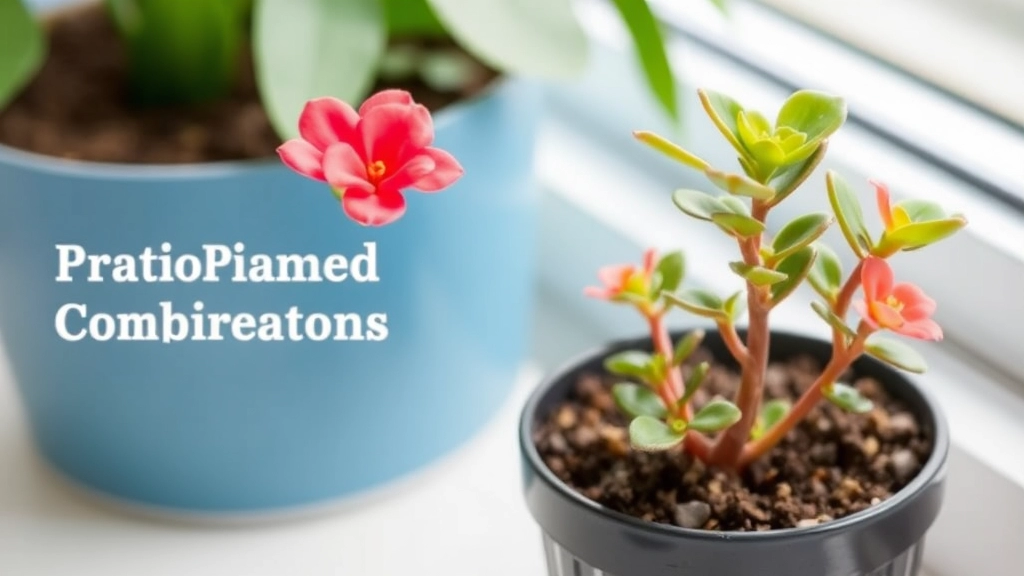
When it comes to nurturing your indoor Kalanchoe, the potting and repotting process is crucial for its health and growth. You may wonder, “When should I pot or repot my Kalanchoe?” or “What type of pot is best?” Let’s delve into these common concerns.
Choosing the Right Pot
- Drainage: Ensure your pot has drainage holes to prevent waterlogging.
- Size: A pot that is 1-2 inches larger in diameter than the current one is ideal for repotting.
- Material: Terracotta pots are great for Kalanchoe as they allow the soil to dry out faster.
Potting Kalanchoe
- Select Your Soil: Use a well-draining cactus or succulent mix.
- Prepare the Pot: Add a layer of gravel at the bottom to enhance drainage.
- Planting:
- Gently remove the Kalanchoe from its old pot.
- Loosen any tightly bound roots.
- Place it in the new pot, ensuring the top of the root ball is level with the soil surface.
- Watering: Water lightly after potting to help settle the soil.
Repotting Kalanchoe
- Timing: Repot every 1-2 years, preferably in spring when growth is active.
- Signs It’s Time:
- Roots are visible through drainage holes.
- The plant is top-heavy or leaning.
- Soil dries out too quickly.
Additional Tips
- Avoid Overpotting: A pot that’s too large can retain excess moisture, leading to root rot.
- Check for Pests: Inspect roots for any signs of pests during repotting.
Proper Watering Techniques for Healthy Growth
When it comes to nurturing your Kalanchoe, one of the most common concerns is how much water it truly needs. Overwatering can lead to root rot, while underwatering can stunt its growth. So, how do you strike that perfect balance?
Understanding Kalanchoe’s Water Needs
Kalanchoe plants are succulents, meaning they store water in their leaves. This unique characteristic allows them to thrive in arid conditions. Here are some key points to consider:
- Soil Moisture Check: Always check the top inch of soil. If it feels dry, it’s time to water.
- Frequency: During the growing season (spring and summer), water every 2-3 weeks. In the dormant season (fall and winter), reduce watering to once a month.
- Watering Technique: Water deeply but infrequently. Ensure that excess water drains out of the pot to prevent sogginess.
Signs Your Kalanchoe Needs Water
Keeping an eye on your plant can help you determine its watering needs:
- Drooping Leaves: If the leaves appear limp, it’s a sign of underwatering.
- Wrinkled Leaves: This indicates that the plant is dehydrated.
- Yellowing or Mushy Leaves: These symptoms often suggest overwatering.
Best Practices for Watering Kalanchoe
To ensure your Kalanchoe thrives, consider these practical tips:
- Use Well-Draining Soil: A cactus mix or a blend of potting soil with sand or perlite works wonders. For more details, you can check out our best soil for Kalanchoe Blossfeldiana care tips.
- Water in the Morning: This allows the plant to absorb moisture before the heat of the day.
- Avoid Watering the Leaves: Focus on the soil to prevent fungal diseases. Learn more about how to care for Kalanchoe succulents effectively.
By following these watering techniques, you’ll set your Kalanchoe up for healthy growth.
Providing the Right Amount of Sunlight
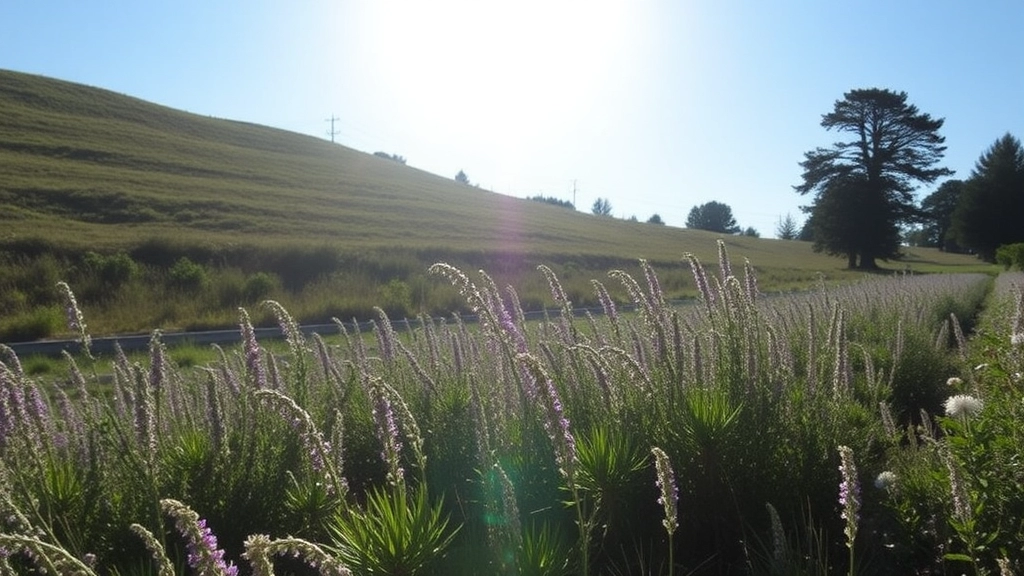
So, you’ve got your Kalanchoe all set up, but now you’re wondering, “How much sunlight does this plant really need?”
Well, let me tell you, getting the sunlight right is absolutely crucial for a thriving Kalanchoe.
- Bright, Indirect Light: Kalanchoe loves bright light, but direct sunlight can scorch its leaves. Aim for a spot where it can soak up that lovely indirect sunlight. A south or east-facing window is often the best bet.
- Watch for Signs: If your Kalanchoe starts stretching towards the light, it’s a sign it’s not getting enough. Conversely, if the leaves turn yellow or brown, it might be getting too much sun.
- Adjust with Seasons: Remember, as the seasons change, so does the sunlight. In winter, you might need to move your plant closer to the window.
- Outdoor Placement: If you’re planting it outside, try to find a spot with partial shade, especially during the hottest part of the day.
- Rotate for Balance: Don’t forget to rotate your Kalanchoe every now and then. This helps it grow evenly and prevents it from leaning too much to one side.
By getting the sunlight just right, you’re setting your Kalanchoe up for vibrant growth and those stunning blooms we all love.
Fertilization: When and How to Feed Kalanchoe
As we explore the essential care for Kalanchoe, fertilization plays a vital role in promoting healthy growth and vibrant blooms.
When to Fertilize Kalanchoe
Kalanchoe thrives when given the right amount of nutrients, but timing is crucial. Here’s a simple guide:
- Growing Season: Fertilize during the active growing season, typically in spring and summer.
- Frequency: A monthly application is ideal during this period.
- Dormant Season: Reduce or stop fertilizing in the fall and winter when the plant rests.
How to Choose the Right Fertilizer
Selecting the right fertilizer can make all the difference. Consider these options:
- Balanced Fertilizer: A 10-10-10 (N-P-K) ratio works well for Kalanchoe.
- Liquid Fertilizer: This allows for easy application and quicker absorption.
- Slow-Release Granules: These can provide nutrients over an extended period, reducing the frequency of application.
Application Tips
Applying fertilizer correctly ensures your Kalanchoe receives the benefits without damage. Follow these steps:
- Dilute Liquid Fertilizer: Always dilute to half-strength to prevent root burn.
- Water Before Application: Ensure the soil is moist to help the plant absorb nutrients.
- Apply Evenly: Distribute the fertilizer evenly around the base of the plant, avoiding direct contact with the leaves.
Signs of Over-Fertilization
Be mindful of the signs that you may be overdoing it:
Common Pests and How to Deal with Them
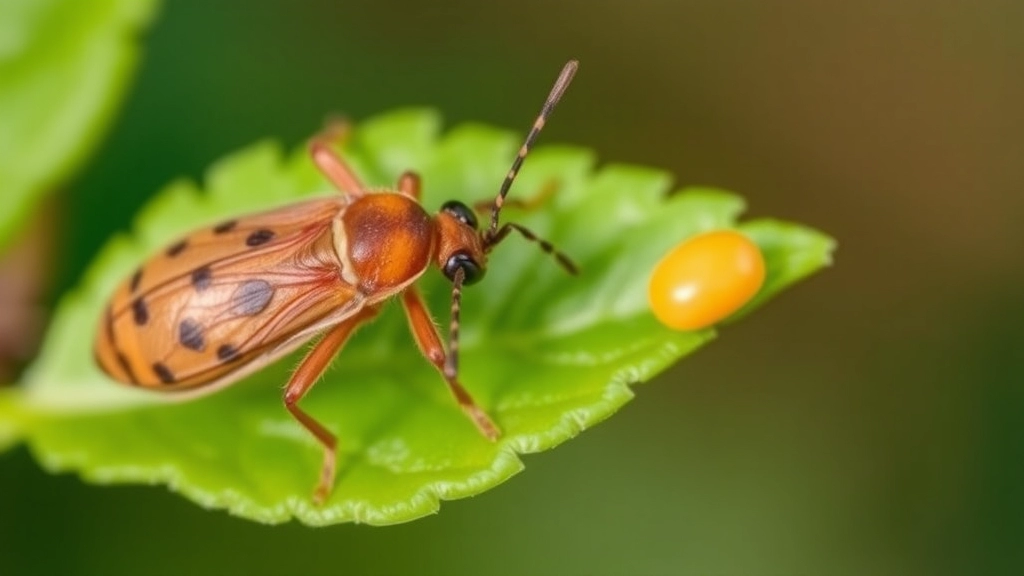
So, you’ve got your Kalanchoe thriving, but wait—what’s that? Tiny critters munching on your beautiful leaves?
Dealing with pests can feel daunting, but it’s a common challenge for Kalanchoe lovers.
Common Pests to Watch For
- Aphids: These little sap-suckers love to hang out on the undersides of leaves.
- Mealybugs: They look like tiny cotton balls and can quickly take over if you’re not careful.
- Spider Mites: Often found in dry conditions, they leave fine webbing and speckled leaves.
- Scale Insects: These guys appear as small brown bumps on stems and leaves.
How to Tackle These Pests
- Inspect Regularly: Make it a habit to check your plants weekly. Early detection is key!
- Wash Them Off: A gentle spray of water can dislodge many pests. Just be sure to do this in the morning to avoid soggy soil.
- Use Insecticidal Soap: This is a safe option for most pests. Just follow the instructions on the label.
- Neem Oil: A natural remedy that works wonders. Mix it with water and spray on affected areas.
- Hand-Picking: For larger pests like mealybugs, simply wipe them off with a cotton swab dipped in alcohol.
Prevention is Better Than Cure
- Keep it Clean: Regularly remove dead leaves and debris around your Kalanchoe.
- Avoid Overwatering: Damp conditions attract pests. Ensure your plant has good drainage.
- Quarantine New Plants: If you bring in a new plant, keep it separate for a few weeks to check for any pests before introducing it to your collection.
Propagating Kalanchoe Successfully
Have you ever wondered how to multiply your Kalanchoe plants without spending a fortune? Propagating Kalanchoe is not only easy, but it can also be incredibly rewarding.
1. Choose the Right Time
- The best time to propagate Kalanchoe is during the spring or early summer when the plant is actively growing.
2. Select Healthy Cuttings
- Look for healthy stems or leaves.
- Ensure they are free from pests and diseases.
- Aim for cuttings that are at least 3-4 inches long.
3. Prepare the Cuttings
- Use a clean, sharp knife or scissors to make a clean cut.
- Allow the cuttings to dry for a few hours or overnight until the cut ends callous over. This helps prevent rot.
4. Use the Right Soil
- A well-draining soil mix is crucial.
- You can use a cactus mix or create your own by mixing potting soil with perlite or sand.
5. Plant the Cuttings
- Insert the cut ends into the soil mix, burying them about an inch deep.
- Space them out to give each cutting room to grow.
6. Water Sparingly
- After planting, lightly water the soil.
- Avoid overwatering; let the soil dry out between waterings.
7. Provide Ideal Conditions
- Place the cuttings in a bright, indirect light location.
- Keep them warm, ideally around 20-25°C (68-77°F).
8. Monitor Growth
- In a few weeks, you should see new growth.
- Once established, you can treat them like adult Kalanchoe plants.
Encouraging Reblooming for More Vibrant Kalanchoe Flowers
So, you’ve enjoyed a stunning display of Kalanchoe flowers, but now you’re wondering how to coax them into blooming again.
It’s a common concern for plant lovers, and the good news is, with a bit of care, you can encourage your Kalanchoe to show off its vibrant blooms once more.
Here’s how to get those flowers popping again:
- Prune After Blooming: Once your Kalanchoe has finished flowering, it’s time to prune. Snip off the spent flowers and any dead or yellowing leaves. This helps the plant focus its energy on new growth.
- Adjust Watering: After blooming, reduce watering. Kalanchoe likes to dry out between waterings. Overwatering can lead to root rot and hinder reblooming. Aim for a balanceâwater when the top inch of soil feels dry.
- Provide a Rest Period: Give your Kalanchoe a break. After blooming, it needs a rest period of about six weeks. During this time, keep it in a cooler spot with less light and minimal water.
- Return to Bright Light: Once the rest period is over, bring your Kalanchoe back to a bright, sunny spot. This is crucial for triggering new blooms.
- Fertilize Wisely: Start feeding your Kalanchoe with a balanced, water-soluble fertiliser every few weeks during the growing season. This will provide the nutrients needed for those beautiful flowers to return.
- Watch for Pests: Keep an eye out for pests like aphids or mealybugs. They can stress your plant and affect blooming. If you spot any, treat them promptly with insecticidal soap.
By following these tips, you’ll be well on your way to enjoying another round of those gorgeous Kalanchoe flowers. For more detailed advice on how to grow and care for flowering Kalanchoe Blossfeldiana, check out our comprehensive guide. Additionally, if you need specific information on the ideal temperature for Kalanchoe Blossfeldiana growth, we’ve got you covered!
FAQs on Planting Kalanchoe
What kind of soil does Kalanchoe need?
Kalanchoe thrives in a well-draining soil mix. A combination of 50% potting soil, 25% perlite, and 25% coarse sand is ideal. This blend ensures proper drainage and mimics the plant’s natural habitat.
How do I pot or repot Kalanchoe?
When potting or repotting Kalanchoe, select a pot with drainage holes and use a well-draining cactus or succulent mix. Add a layer of gravel at the bottom to enhance drainage. Repot every 1-2 years, preferably in spring.
What type of pot is best for Kalanchoe?
Terracotta pots are ideal for Kalanchoe as they allow the soil to dry out faster. Ensure the pot is 1-2 inches larger in diameter than the current one to accommodate growth.
How much sunlight does Kalanchoe need?
Kalanchoe prefers bright, indirect light. A south or east-facing window is often the best spot. Avoid direct sunlight to prevent scorching the leaves. Rotate the plant occasionally to ensure even growth.
What are common pests that affect Kalanchoe?
Common pests include aphids, mealybugs, spider mites, and scale insects. Regular inspection and early detection are crucial. Use insecticidal soap, neem oil, or hand-pick larger pests to manage infestations.
How can I prevent pests on my Kalanchoe?
Prevent pests by keeping the plant area clean, avoiding overwatering, and quarantining new plants before introducing them to your collection. Regularly inspect and remove dead leaves and debris.
When should I repot my Kalanchoe?
Repot your Kalanchoe every 1-2 years, preferably in spring when growth is active. Signs that it’s time to repot include roots visible through drainage holes, the plant being top-heavy, or soil drying out too quickly.
How do I ensure proper drainage for Kalanchoe?
Ensure proper drainage by using a well-draining soil mix and a pot with drainage holes. Adding a layer of gravel at the bottom of the pot can also help enhance drainage.
What should I do if my Kalanchoe is stretching towards the light?
If your Kalanchoe is stretching towards the light, it’s a sign it’s not getting enough sunlight. Move it to a brighter location with indirect light to help it grow more compactly.
References
-
How to Grow Kalanchoe Indoors
-
Kalanchoe Plant Care
-
Kalanchoe Plant Guide
